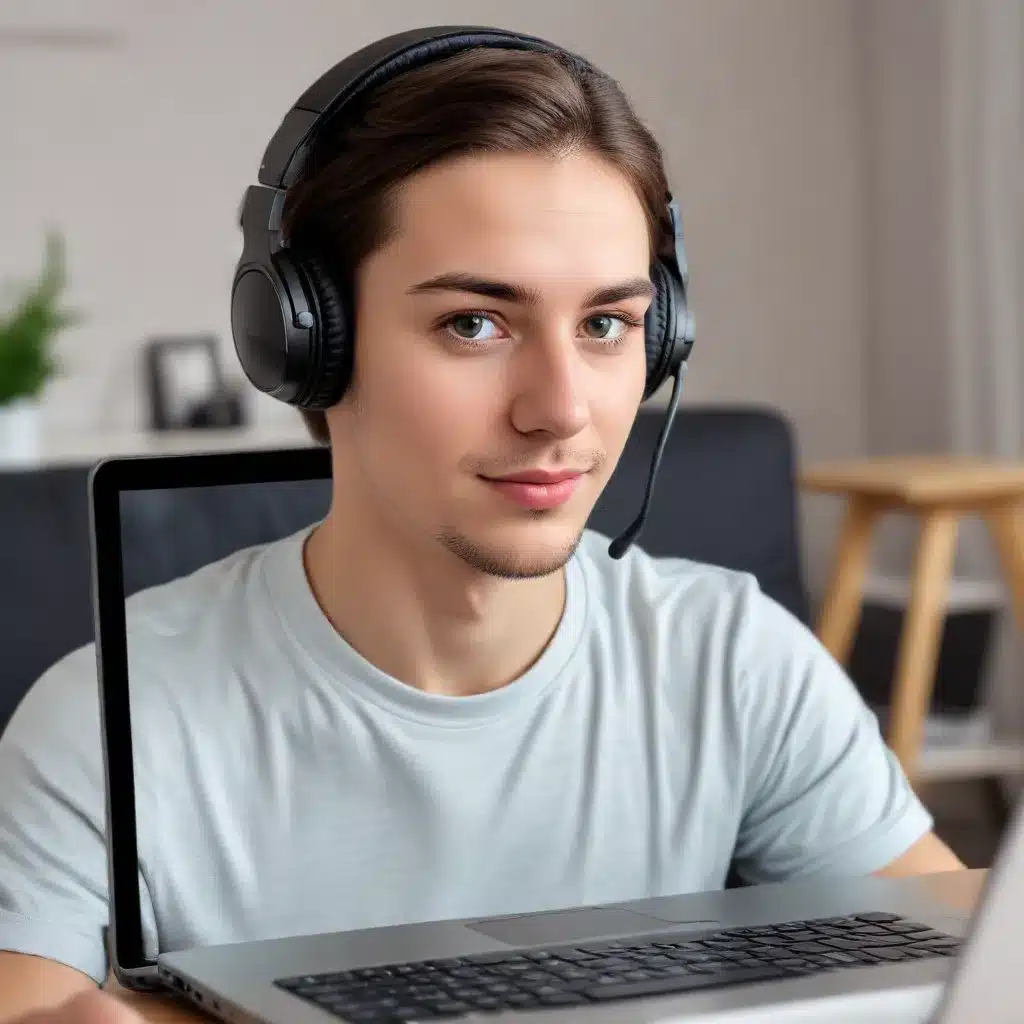
Understanding the Challenges of Webcam Audio
Participating in video calls has become an essential part of modern communication, whether for work, remote learning, or staying connected with loved ones. However, many users struggle with poor audio quality during these virtual interactions, which can be frustrating and hinder effective communication.
One common issue that plagues laptop webcam users is unwanted background noise. Laptops are often used in environments with various sound sources, such as fans, keyboards, or ambient noise, which can be picked up by the built-in microphone and disrupt the clarity of the audio. This can make it difficult for the other participants to hear the speaker clearly, leading to misunderstandings and reduced engagement.
The Role of Noise Suppression in Webcam Audio
To address the problem of background noise, many video conferencing platforms, including Zoom, incorporate noise suppression algorithms. These algorithms are designed to identify and reduce or eliminate unwanted sounds, allowing the speaker’s voice to be more prominently heard.
However, as users have discovered, the implementation of these noise suppression features can sometimes create unintended consequences. In some cases, the aggressive noise reduction can inadvertently affect the quality of the speaker’s voice, resulting in a “lisp” or distortion effect that can be just as disruptive as the original background noise.
Exploring the Causes of the “Lisp” Effect
The “lisp” effect observed by many Zoom users is likely caused by the way the noise suppression algorithm interacts with certain types of speech patterns, particularly sibilant consonants (such as “s” and “z” sounds). The noise suppression may incorrectly identify these high-frequency sounds as background noise and attempt to reduce or eliminate them, leading to the unnatural and distorted speech pattern.
This issue seems to be more prevalent with certain microphone types, such as those with slow compression attacks or a lack of windscreening. Microphones that are positioned very close to the user’s mouth may also be more susceptible to this problem, as the algorithm may struggle to differentiate between the speaker’s voice and background noise.
Optimizing Noise Suppression Settings for Better Audio Quality
To mitigate the “lisp” effect and improve the overall audio quality during video calls, users can try adjusting the noise suppression settings in their video conferencing software. Many platforms, including Zoom, offer different levels of noise suppression, ranging from “Auto” to “High” or “Low.”
The “Low” noise suppression setting is generally recommended for users who need to preserve the natural quality of their audio, such as musicians or performers. This setting will provide minimal background noise reduction, allowing more of the original sound to be transmitted.
For users in standard environments with moderate background noise, the “Medium” noise suppression setting may be more appropriate. This setting aims to strike a balance between reducing unwanted sounds and maintaining the integrity of the speaker’s voice.
In cases where the background noise is more severe, the “High” noise suppression setting may be necessary. However, it’s important to be aware that this setting may be more prone to causing the “lisp” effect, as the algorithm becomes more aggressive in its attempts to eliminate background noise.
Utilizing Original Sound or Music Mode
Some video conferencing platforms, such as Zoom, offer advanced audio settings that can further enhance the audio quality for specific use cases. One such feature is the “Original Sound” or “Music Mode” setting, which is designed to prioritize the fidelity of the audio input, minimizing the impact of noise suppression.
By enabling this feature, users can often achieve better results when sharing music, playing instruments, or engaging in other activities that require high-quality audio transmission. This setting may help to bypass the noise suppression algorithms and preserve the natural qualities of the audio.
Troubleshooting Laptop-Specific Audio Issues
In some cases, the issues with webcam audio quality may be related to specific hardware or software configurations on the user’s laptop. For example, certain laptop models or operating systems may have built-in audio processing features that interact with the video conferencing software in unexpected ways.
One common issue reported by users is that the presence of the “Bang & Olufsen” (B&O) audio control software on HP laptops can interfere with the noise suppression settings in Zoom. In these cases, disabling the noise cancellation feature in the B&O app or uninstalling the software entirely may resolve the problem.
Similarly, users with Windows 11 laptops have reported issues with the Intel Smart Audio chip, which can block the transmission of musical instruments or other non-voice audio during video calls. In these situations, disabling the microphone array in the Windows sound settings and using an external microphone may be a viable workaround.
Conclusion: Achieving High-Quality Webcam Audio
Maintaining clear and natural-sounding audio during video calls is essential for effective communication and collaboration. By understanding the nuances of noise suppression algorithms and their potential pitfalls, users can optimize their video conferencing settings to achieve the best possible audio quality.
Whether it’s adjusting the noise suppression level, utilizing the “Original Sound” or “Music Mode” features, or addressing laptop-specific audio issues, there are several strategies that users can employ to improve their webcam audio experience. By taking the time to explore these solutions, you can ensure that your virtual interactions are as seamless and engaging as possible.
For more technology tips and IT solutions, be sure to visit IT Fix, where our team of experienced professionals is dedicated to helping users navigate the ever-evolving digital landscape.












